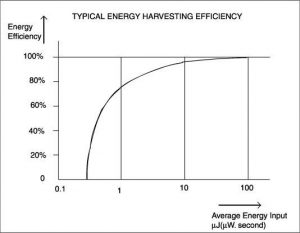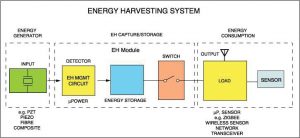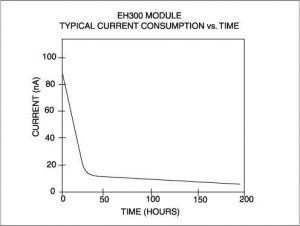
Energy harvesting for a greener environment
By Advanced Linear Devices Inc.
Electronics Production / Materials Regulations & Standards Engineering Environmental Supply Chain energy efficiency energy managementIntroduction
Energy Harvesting (EH) is the process of electronically capturing and accumulating energy from a variety of energy sources deemed wasted or otherwise said to be unusable for any practical purpose. Energy harvesting, or energy scavenging as the process is sometimes referred to, is associated with capturing residual energy as a by-product of a natural environmental phenomenon or industrial process and is therefore considered free-energy.
More often than not, these residual energies are released into the environment as wasted potential energy sources. Examples of common target energy harvesting sources include mechanical energy resulting from vibration, stress and strain, thermal energy from furnaces, combustion engines and other heating sources, even biological, solar energy from all forms of light sources, ranging from lighting, light emissions and the sun, electromagnetic energy that are captured via inductors, coils and transformers; wind and fluid energy resulting from air and liquid flow, chemical energy from naturally recurring or biological processes and huge amounts of RF energy in the environment because of ubiquitous radio transmitters and television broadcasting.
A variety of well known devices, materials and sensors are typically used to convert wasted energy sources and sunlight into electrical voltages and currents, which can then be harvested, stored and conditioned for many low voltage wearable electronics and wireless sensor applications that heretofore required AC power supplies or batteries.
Examples of energy generators include materials such as, piezoelectric (PZT) crystals or fiber composites, solar photovoltaic cells, thermoelectric generators (TEGs), and electromagnetic inductor coils to name a few. These materials generate a wide range of output voltage and currents – none however can be utilized directly as power sources for driving low-energy electronics without energy harvesting electronics designed to manage the available power and communicate handshake instructions to compatible wireless sensor systems.
In most cases, these sources provide energy as spurious, random and otherwise irregular energy spikes or very low level amounts to allow adequate energy capture and technologies did not exist to capture this energy with great efficiency. With recent developments however in MOSFET ‘zero-threshold’ transistor designs, energy harvesting electronics have catapulted to new heights enabling energy capture, storage (in a capacitor, super capacitor or battery) and management with more than 95% retention efficiency.
Classic energy harvesting electronics
The classic (high-efficiency) energy harvester system consists of an energy generator, capture, storage, management electronics and load designed to be powered by the harvester, typically a wireless sensor network. In the block diagram below, a piezoelectric crystal membrane is shown as the energy generator. The piezoelectric generator transforms mechanical vibrations, strain or stress into electrical voltage/current.
This mechanical strain can come from many different sources including human motion, bridge or other low-frequency seismic vibrations, aircraft or vessel vibrations and acoustic noise are everyday examples. Except in rare instances the piezoelectric effect operates in alternating current requiring time-varying inputs at mechanical resonance to be considered the most efficient energy generator. Most piezoelectric sources produce very high voltages but extremely small currents resulting in available power on the order of milliwatts – too small for most system applications, but an ideal generating source for energy harvesting electronics.
AC Energy from the PZT is input to the detector which converts the voltage to dc and initiates the capture and storage operation. The detector can accept instantaneous input voltages ranging from 0.0V to +/-500Vac and input currents from 200nA to 400mA in either a steady stream of pulses or intermittent and irregular manner with varying source impedances. Early harvester electronics required a minimum of 4V input to capture and store the energy from PZT and other generators. More recent designs feature a front-end voltage booster and claim to initiate capture and energy storage with voltage inputs as low as 100mV.
Designing energy harvesting electronics
As the energy generating source injects energy into the detector electronics, these electrical charge impulses are collected, accumulated and stored onto an internal storage capacitor, super capacitor or battery. The capture mechanism is set to operate between two supply voltage thresholds, +V_low dc and +V_high dc, corresponding to the minimum (VL) and maximum (VH) supply voltage values for the intended ‘load’ application. When (VH) is achieved, further charging is terminated and the output can be switched ‘on-demand’ to power the load.
As the output diminishes and falls to (VL) the charging cycle begins again until it reaches (VH). Typical charge/cycle times are within four minutes at an average input current of 10mA and within 40 minutes at an average input current of just 1.0mA. For optimum performance and long energy retention times, designing energy harvesting electronics must incorporate micro-power devices so that the energy consumed by the harvesting electronics is much smaller than the energy input by the generating source. The net captured energy is a direct function of energy available for capture minus the energy the EH circuit must consume to stay in the active mode. The following graph provided courtesy of Advanced Linear devices, Inc., depicts the EH300 Energy Harvesting Module current consumption in nA over time.
Energy efficiency, retention and management
Proper management for capturing, accumulating and storing small electrical energy charges requires high energy efficiency harvesting electronics. Harvester efficiency is defined as the net captured energy as a direct function of energy available for capture, minus the energy that the harvester electronics consume to stay in the active mode. Note that the harvester circuit must stay in the active mode and be ready to perform the energy capture function whenever harvestable energy becomes available and be ready to power the application load on-demand.
As an application example, let’s say the charging energy for the harvester is derived from mechanical vibrations caused by an automobile(s) crossing a bridge whose surface has been outfitted with embedded piezoelectric crystal materials. The object of the application is to monitor roadbed displacement during certain traffic hours or at other times when such scientific monitoring would yield significant data for this specific purpose. The piezoelectric strip(s) are connected to the energy harvester electronics which in-turn is designed to power a wireless transmitter whose input is a series of displacement transducers, also embedded in the roadway surface.
If the harvester efficiency was typically low, the intermittent energy charges created by passing automobiles would have to charge the harvester almost continually while in the active mode in order to achieve the proper output power to drive the load. With a well designed harvester having greater than 90% efficiency however, the energy consumed by the harvester electronics would be much smaller than the random energy generated by the mechanical vibrations and captured for storage thus allowing for adequate powering of the transmitter even at times of lighter automotive traffic.
The graph below typically depicts the percent energy efficiency vs. available active energy input in terms of μJ(μW seconds) that one can expect from a harvester designed with micro-power, zero-threshold MOSFET arrays. 
Energy retention
A second key component of Energy Management, also efficiency related, is High Energy Retention designed to store the captured energy for as long as possible with minimal leakage or loss. In the example of the bridge monitoring application discussed above, when automobile traffic and vibration is minimized, there may be extended time intervals before sufficient energy has been captured and stored by the harvester electronics to trigger a transducer data transmission.
Therefore, the harvester electronic design must possess extremely high Energy Retention for this type of monitoring as well as other similar wireless applications where the energy generator function is randomly available or interrupted for long periods of time. Using alternative energy generators such as solar or thermoelectric generators may also be considered to improve available harvested energy when more frequent data collection is required.
Management
Energy Conditioning is a third key component of Energy Management and refers to critical monitoring of the harvester minimum (VL) and maximum (VH) output supply voltage since the input energy is usually random and uncontrolled. To conserve power consumption, nanopower comparator circuits are typically employed to monitor and control the input capture and energy storage min/max limits. System ready and other hand-shake commands are also generated in concert with requirements of the wireless sensor network.


